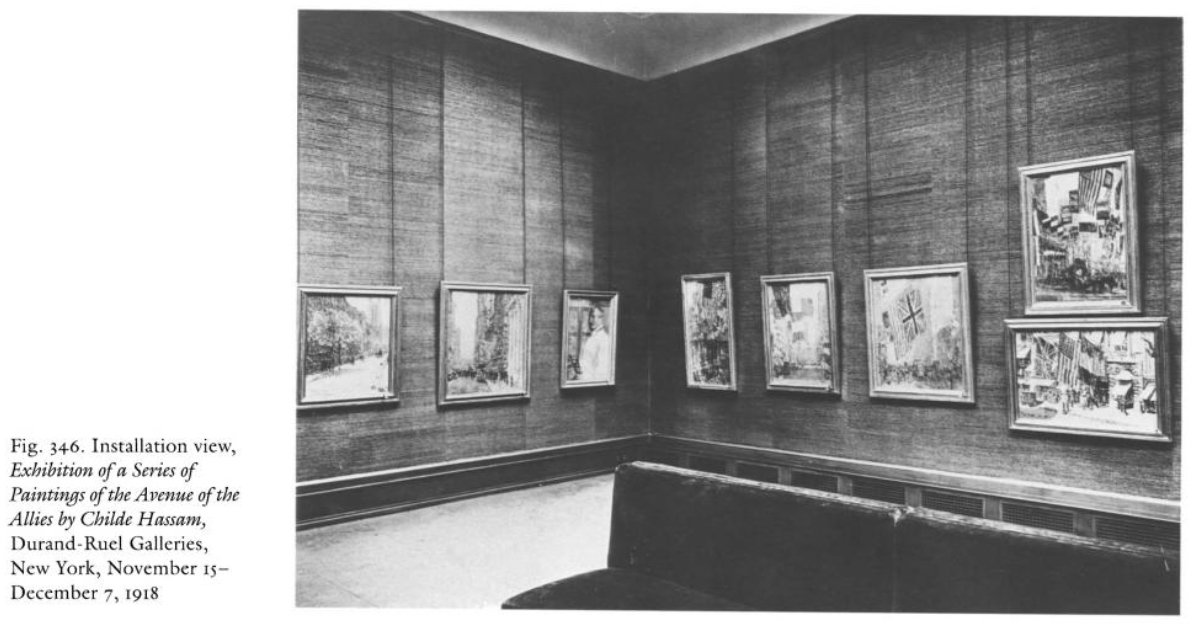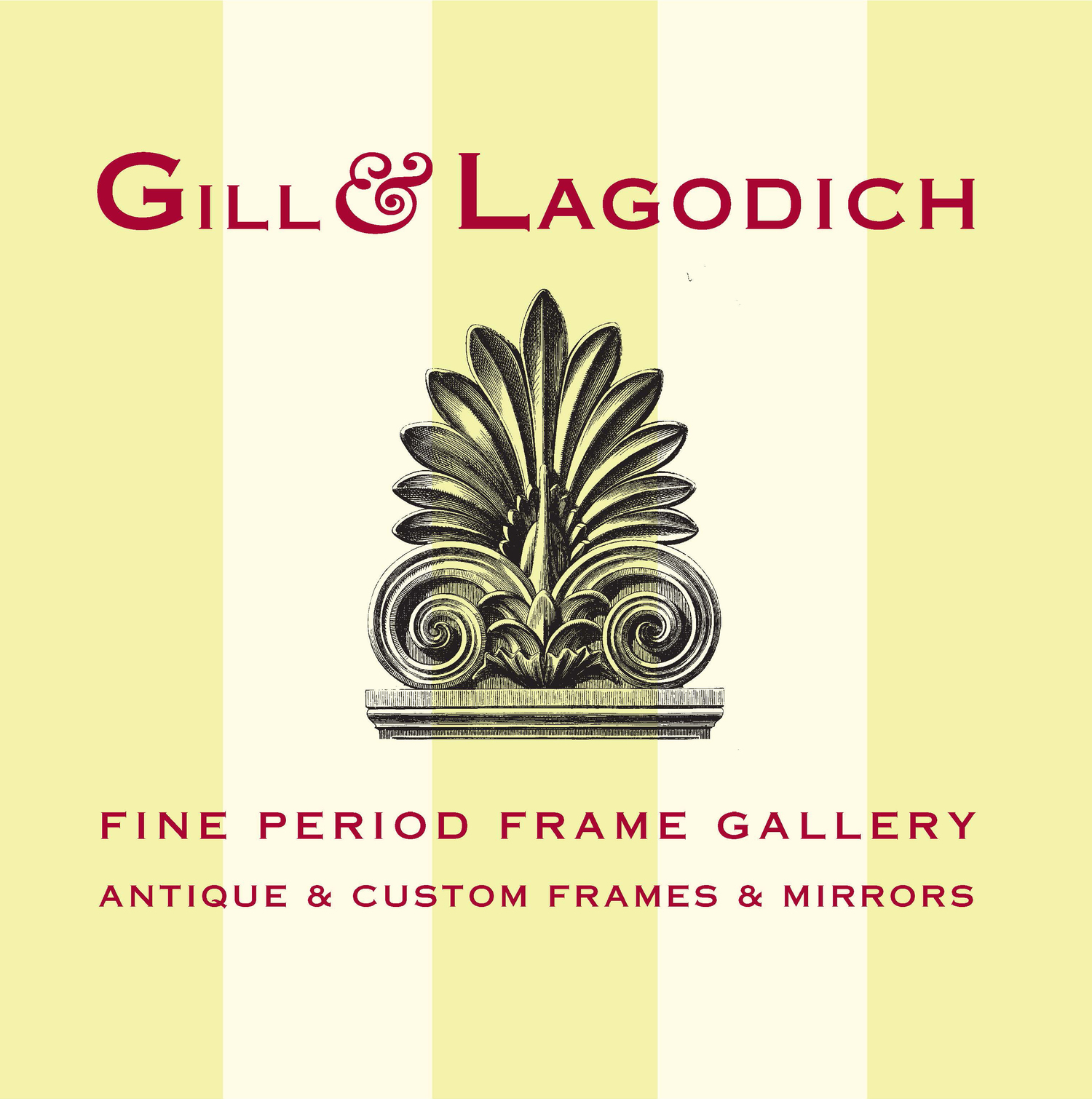F. CHILDE HASSAM
Gill & Lagodich have framed over two dozen works by Frederick Childe Hassam for private collectors, dealers, and public institutions. Museums include Amon Carter Museum of American Art (Flags on the Waldorf, 1916) Crystal Bridges Museum of American Art (Paris at Twilight, 1887-89), High Museum of Art Seascape–Isles of Shoals, 1902), Indianapolis Museum of Art (The Hod Carrier, 1900), Mead Art Museum (Flags on the Friar’s Club, New York City, 1918), Metropolitan Museum (Peach Blossoms—Villiers-le-Bel, c. 1887-89 and restoration of original frame for The Church at Gloucester, 1918), The Phillips Collection (Washington Arch, Spring, ca. 1893), and Terra Foundation for American Art (French Peasant Girl, c. 1883).
Check back soon as we add more images.
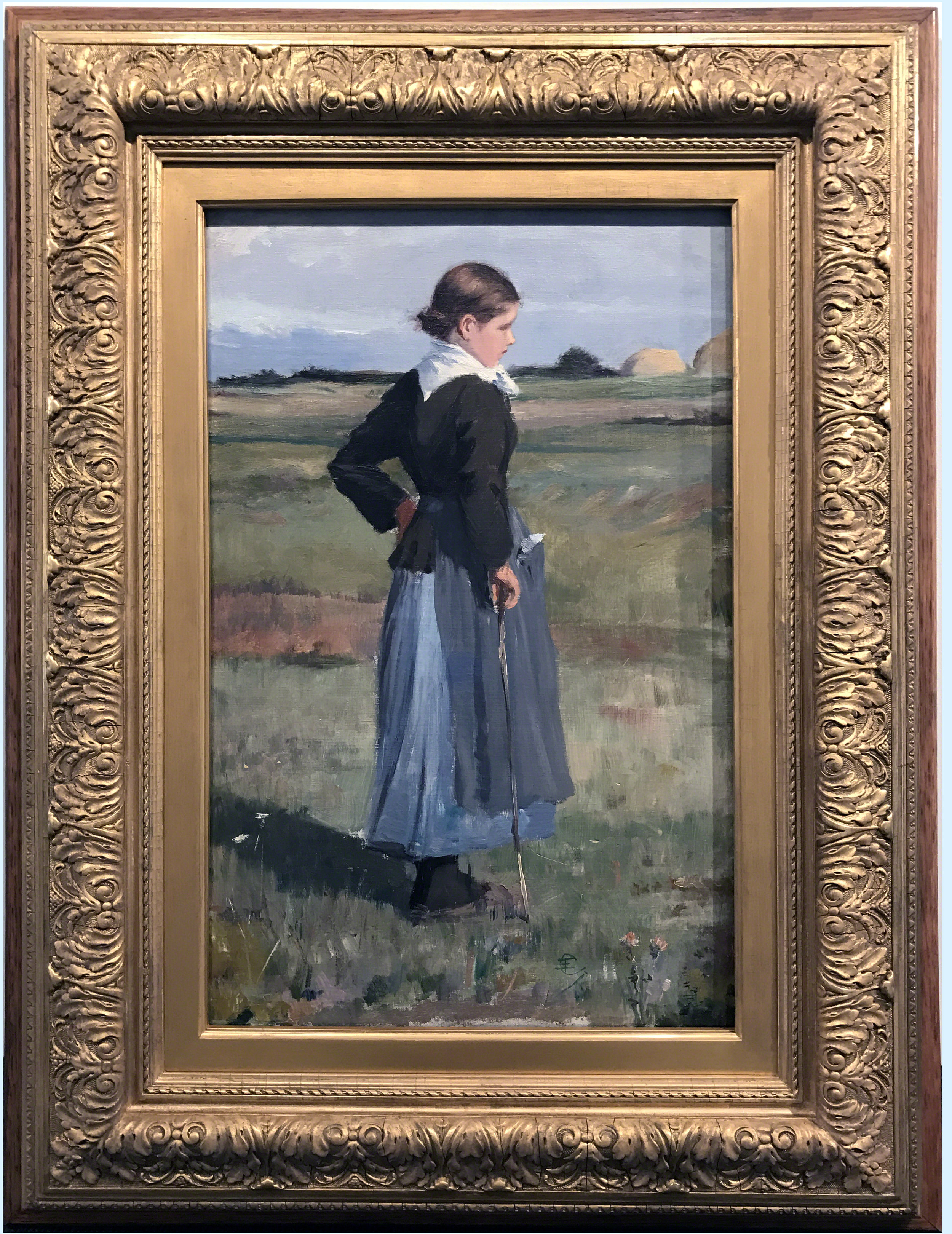
CHILDE HASSAM (1859–1935)
French Peasant Girl, c. 1883, oil on canvas, 21-5/8” x 13-7/8”, period 1870-80s American frame, gilded applied composition ornament over wood; reverse profile, acanthus patterned ogee with original wood outer edge; molding width: 5-3/8” "Said to be one of Childe Hassam’s earliest paintings in oils, French Peasant Girl shows a young woman in profile, leaning on a stick as she gazes into the distance beyond the right edge of the composition. Seen from slightly above, the figure is embedded in the land, with only her neck and head rising above the horizon line. The soft brushwork and muted palette (range of colors) of this outdoor image, as well as the peasant subject, show the influence of a group of French painters of rural life and landscape known as the Barbizon school. Hassam gained first-hand knowledge of their work during his first visit to Europe, in 1883; French Peasant Girl probably was painted soon after his return to his native Boston, where the Barbizon school’s naturalistic portrayal of humble country life was championed and emulated by painter William Morris Hunt. Hassam never returned to the theme of peasant life, but the solitary female subject and the problem of juxtaposing near objects against a distant background would continue to preoccupy him for the remainder of his long career." Terra Foundation for American Art, Daniel J. Terra Collection, 1989.21
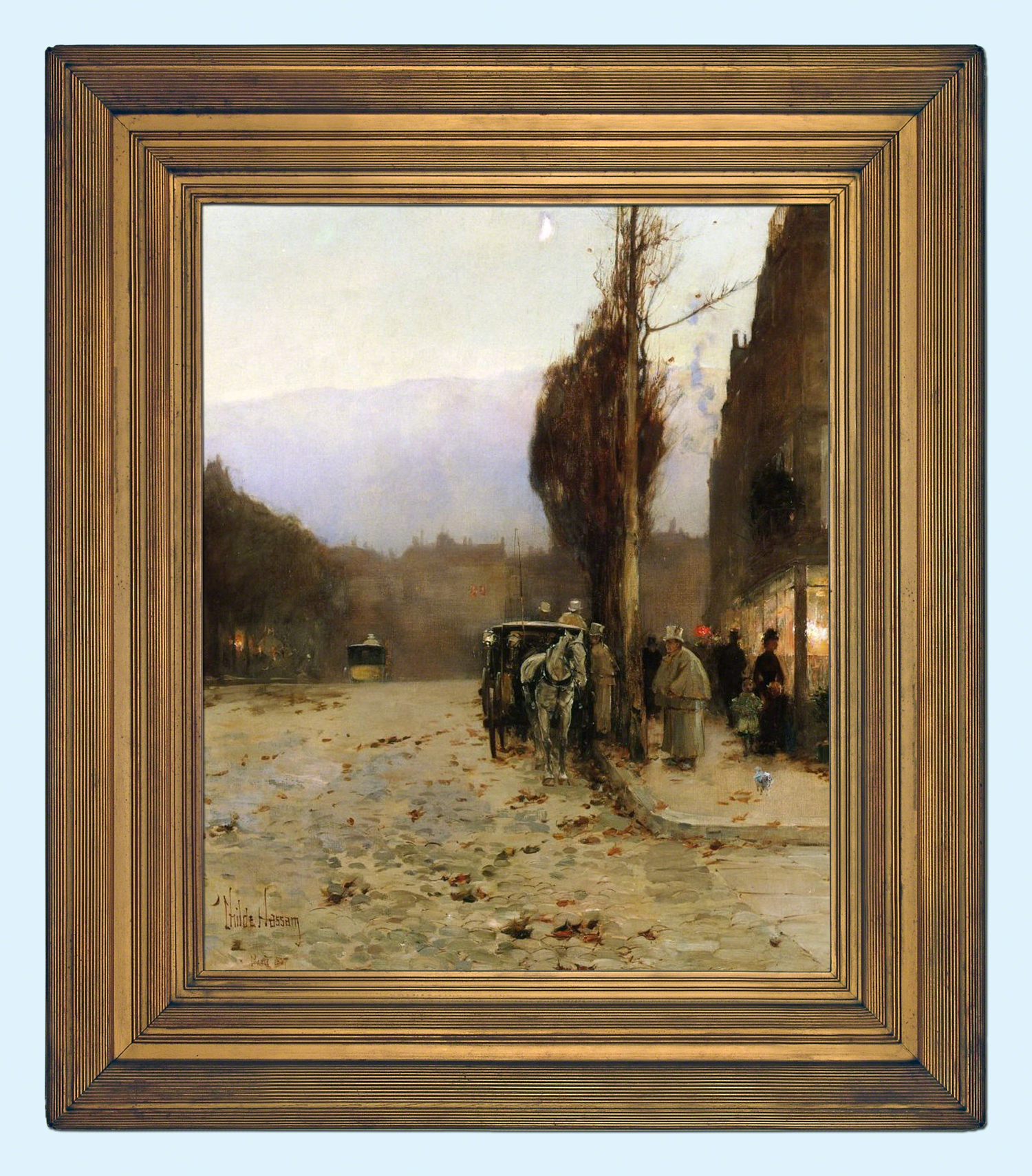
Paris At Twilight, oil on canvas, 1887, 25-1/2" x 21-1/4", framed by Gill & Lagodich for the Crystal Bridges Museum of American Art; period American Whistler-style gilded wood frame.
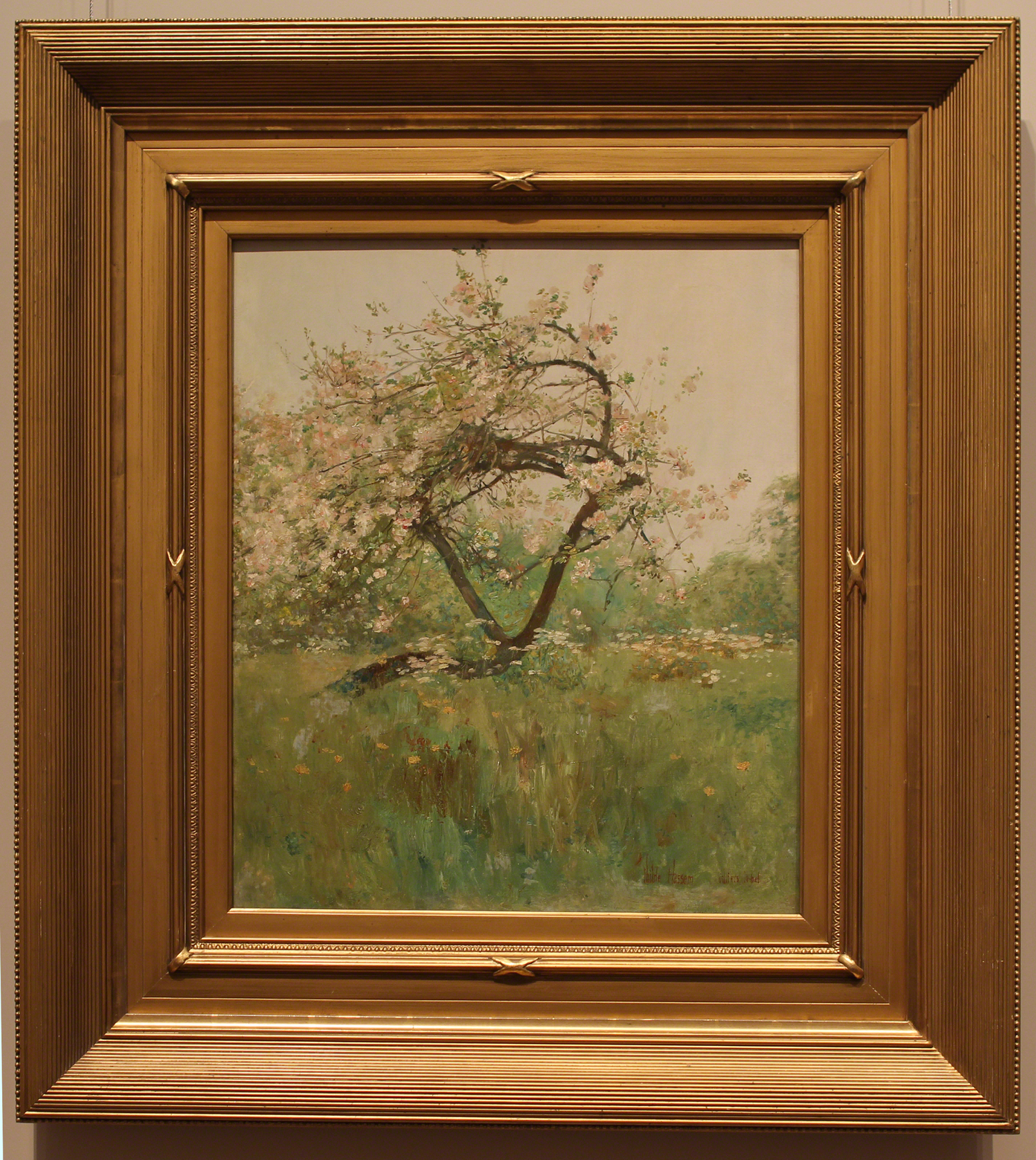
CHILDE HASSAM (1859–1935)
Peach Blossoms — Villiers-le-Bel, 1887–89, oil on canvas, 21-1/2" x 18-1/8". Framed by Gill & Lagodich for the Metropolitan Museum of Art. c. 1890s American frame, gold leaf and Roman-gilding, applied ornament, on wood; very fine Whistler-inspired reeded design, molding width 7 inches. "Hassam studied in Paris from 1887 to 1889. During the summers, he and his wife visited friends at Villiers-le-Bel, about ten miles north-east of the city, in the Oise River valley. There, Hassam painted a series of deligthtul garden scenes that reflect his life liong interest in the subject. Although he produced few simple landscapes in the French countryside, this canvas is an exquisite exception. The unruly, overgrown peach tree in an orchard is delectably dynamic, especially in contrast to the controlled vision of nature in the manicured garden that usually preoccupied Hassam at Villiers-le-Bel." — Metropolitan Museum, permanent collection label. Gift of Mrs. J. Augustus Barnard, 1979, 1979.490.9
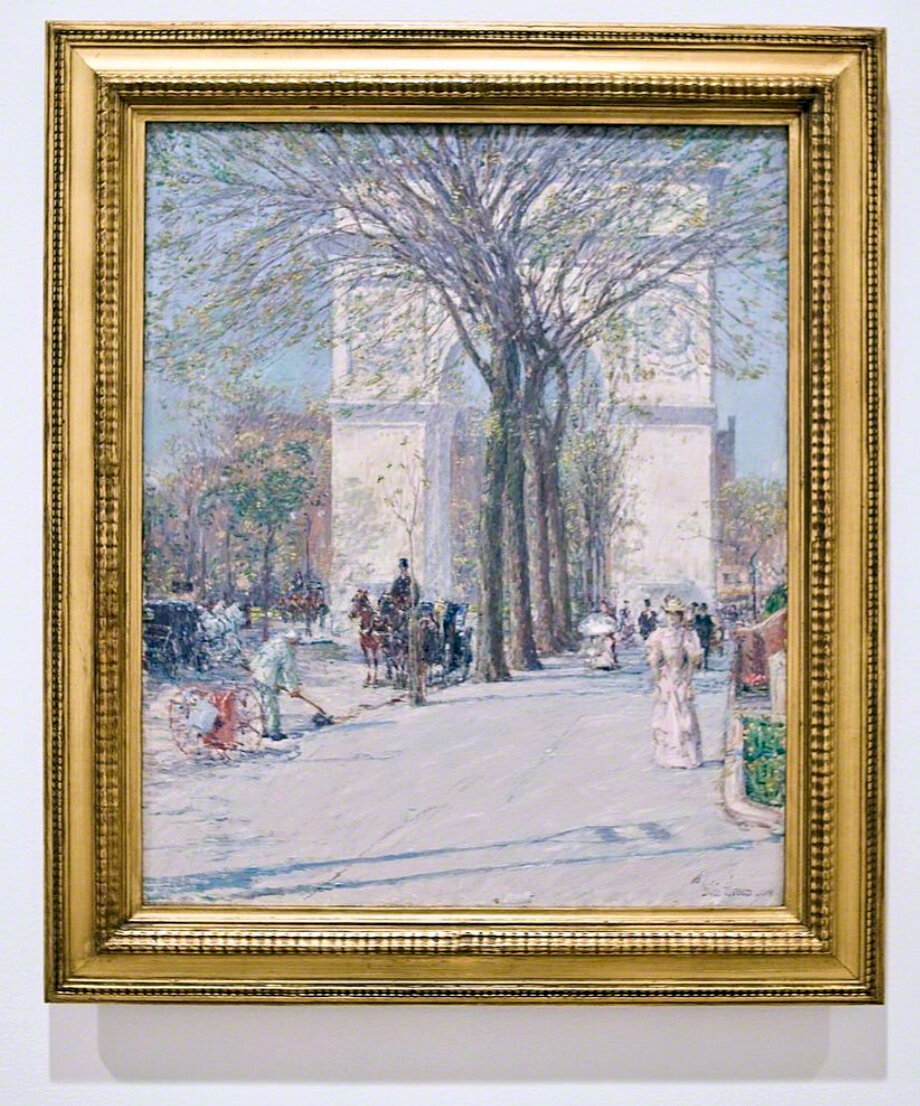
CHILDE HASSAM (1859–1935)
Washington Arch, Spring, ca. 1893, oil on canvas 26-1/8 x 21-5/8 inches; framed by Gill & Lagodich for The Phillips Collection — Smithsonian Institution; c. 1890s American Hassam exhibition painting frame; gilded applied composition ornament, reverse profile, original gilding; molding width: 3 in. “A prolific artist and enthusiastic traveler, Hassam painted a variety of outdoor locations: picturesque coastal towns and cities such as New York, Boston, and Paris. Washington Arch, Spring is an example of one of Hassam's most celebrated and distinctive themes—the city. Like the French impressionists, Hassam enjoyed the challenge of capturing the bustling activity of the street as well as the charm of tree-lined avenues. Even in his early career, before embracing impressionism, he painted city scenes in which light and atmospheric effects played an important part. By the 1880s he was using a higher-keyed palette and looser brushwork to paint the spectacle of Paris boulevards. When he returned from Europe in 1889, he began making paintings and etchings of New York. Hassam saw New York as a place of comparable beauty and excitement to the French capital in the fashionable neighborhoods along Fifth Avenue and at Washington Square. In focusing on the more elegant side of New York life, Hassam equated the city physically to the picturesque capitals of Europe, while also, as Duncan Phillips explained, reflecting the city's "awakening cosmopolitanism…." The arch, sited on Washington Square at the southern end of Fifth Avenue, made clear Hassam's reference to a similar monument, the Arc d'Triomphe in Paris. The New York arch, designed by Stanford White, commemorated the one-hundredth anniversary of George Washington's inauguration. Hassam's residence at was just north of the Square, so he was able to watch the progress of construction, first a temporary wood and plaster structure, finished in 1889, followed by a permanent marble arch completed in 1892. Hassam chose a vantage point at street level. Partially blocked by trees; the arch could be seen in the near distance at the end of Fifth Avenue, shown at a diagonal that sweeps into the composition. Although he employed an asymmetrical design and a light palette, as favored by his French impressionist predecessors, Hassam, like most of his American counterparts, preferred not to sacrifice structure and solid form to the fragmenting effects of broken color. He still sought the momentary and fleeting, however, remarking on his interest in watching the bustle of people on the streets as they went about their daily life. Hassam included several pedestrians in Washington Arch, along with a street cleaner and a horse-drawn carriage. He remained a detached observer, however, focusing on the larger, overall view, and capturing a genteel, sunny, picturesque world.” —museum didactic label
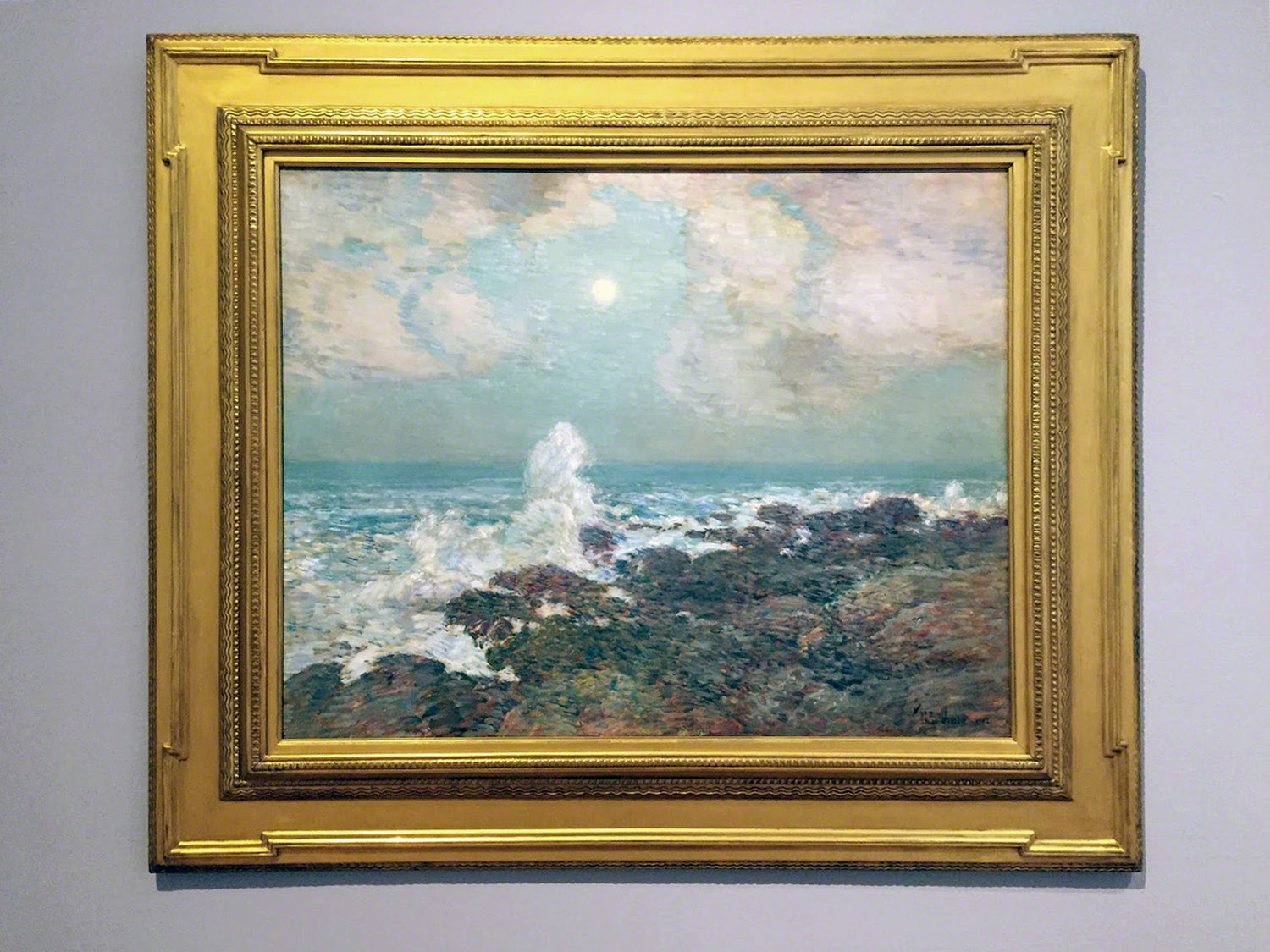
CHILDE HASSAM (1859–1935)
Seascape--Isle of Shoals, 1902, oil on canvas, 29-1/8 x 37-1/2 inches, framed by Gill & Lagodich for the High Museum of Art, Atlanta; c. 1900 Stanford White-style American painting frame, gilded carved wood, attributed to Milch Galleries, New York frame makers.
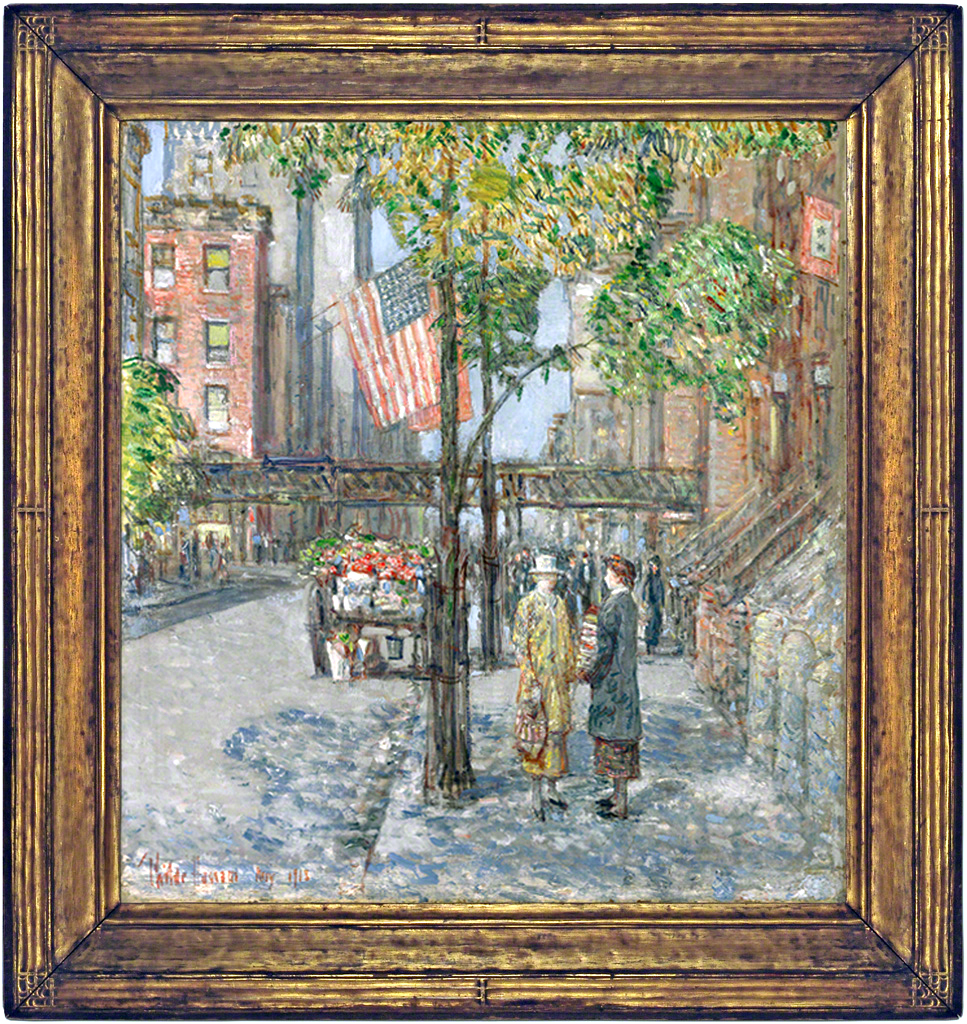
CHILDE HASSAM (1859–1935)
Flags On The Friar's Club, New York City 1918, oil on canvas, 26-5/8 x 24-3/8 inches, framed by Gill & Lagodich for the Mead Art Museum, Amherst; c. 1910-20 American Arts and Crafts painting frame, gilded hand-carved wood, attr. Milch Galleries, New York maker; molding width: 3-3/4
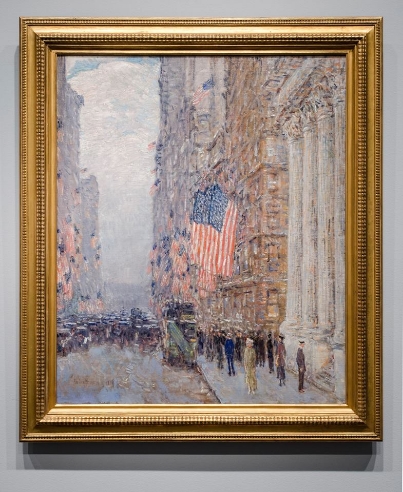
CHILDE HASSAM (1859–1935)
“Flags on the Waldorf," 1916, oil on canvas, 36-1/4” x 31-1/4”. Early 20th-century American Hassam flag painting exhibition frame; gilded applied composition ornament on wood; reverse profile; original gilding. "Hassam recorded the changing patriotic display along Fifth Avenue during World War I, when New York City regularly flew the flags of the allied nations, the armed services, and the American Red Cross." — Amon Carter Museum, permanent collection label. Note: Hassam’s frame preferences are well-documented. This frame is the type specified by Hassam for exhibition of his flag paintings. “Hassam’s concern with the aesthetic impact of frames is evident in his treatment of his Flag paintings. An installation photograph [below] of the first exhibition of the series, at New York’s Durand-Ruel Galleries in November 1918, shows the canvases uniformly framed (fig. 346). That strategy encouraged gallery visitors to view the works as an ensemble, promoting Hassam’s ultimately unfulfilled dream that the entire group would be acquired by New York City or an American museum. The style of the handsome frame is deceptively simple, with many light-catching surfaces that enhance the paintings’ lively colors and broken brushwork.” — Susan G. Larkin, ‘How Hassam Framed Hassams’, in Childe Hassam, American Impressionist, H. Barbara Weinberg, New York (The Metropolitan Museum of Art) 2004, pp. 325–342.
